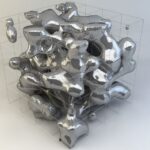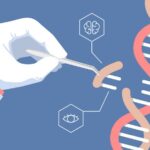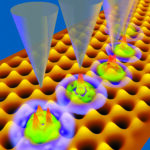Every cell in our body has the same genetic information stored in its DNA. However, cells differ because they express specific genes required to become a certain type, like nerve cells or immune cells, among others. The cell’s fate is controlled by chemical modifications on its DNA, determining which genes are active or inactive. When cells divide and copy their DNA, they lose some of these chemical modifications, raising the question of how they remember their identity.
A new study from MIT proposes a model to explain how cells retain this memory when they divide. It suggests that the 3D folding pattern of a cell’s DNA influences which parts of the DNA receive these chemical modifications. After DNA is copied during cell division, some modifications are lost, but the 3D folding helps each new cell to restore these modifications, maintaining its identity. The process involves a balance between the 3D folding of DNA and the chemical modifications, allowing cells to remember their identity through numerous divisions.
Jeremy Owen, the lead author of the study, explains that different cell types have specific genes turned on or off, making it challenging to switch from one cell type to another. The model they developed illustrates how chemical systems within cells need to function to maintain stable memory of gene expression.
Inside a cell’s nucleus, DNA wraps around proteins called histones, forming chromatin. Chemical modifications on histones create “epigenetic memory,” helping cells maintain their type. The study focused on understanding how this memory is passed on when cells divide.
The research team found that the 3D structure of chromosomes is influenced by these chemical modifications. When cells divide, each copy receives only half of these marks. Enzymes called “reader-writer” enzymes add these marks back to the DNA, and the way DNA is folded guides where these marks are placed.
The process is comparable to the spread of a disease; densely packed regions attract more modifications, while less dense areas receive fewer. This model highlights how these marks spread in three dimensions, affecting which genes are active or inactive.
However, the researchers discovered that over time, these marks could cover the entire genome. Adjusting the enzyme activity in their model helped maintain these marks accurately for hundreds of cell generations without overwhelming the genome with modifications.
This study not only explains how cells retain their identity but also provides insights into how cells might lose their identity as they age. The researchers plan to explore this further and investigate its potential role in diseases related to aging. They also aim to experimentally test their model’s predictions in living cells by altering enzyme levels and observing their effects on cell memory.




















